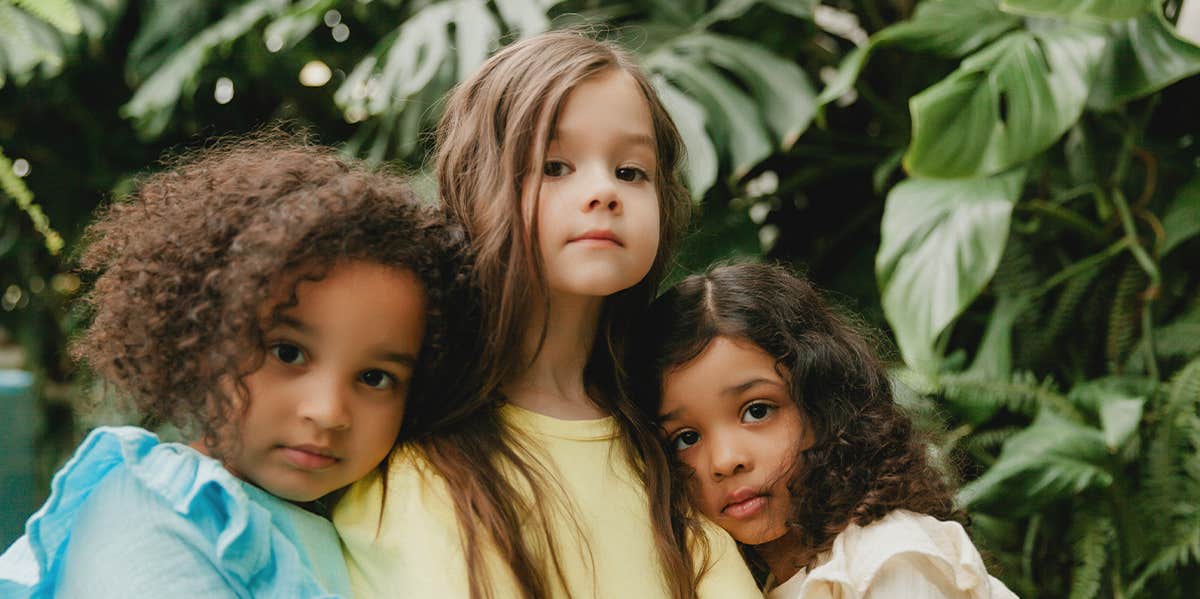Study Says Disney Princesses Harmful To Little Girls — And I Agree
There's more danger than magic in their stories, and the lessons they teach our girls.
 Inna photographer/ Shutterstock
Inna photographer/ Shutterstock Editor's Note: This is a part of YourTango's Opinion section where individual authors can provide varying perspectives for wide-ranging political, social, and personal commentary on issues.
A 2015 study out of Brigham Young University has revealed what half of us already knew, and the other half vehemently denied.
In "Pretty as a Princess: Longitudinal Effects of Engagement With Disney Princesses on Gender Stereotypes, Body Esteem, and Prosocial Behavior in Children," Dr. Sarah Coyne proved that exposure to Disney princess culture isn't as harmless as some moms want to believe.
Coyne tested three- to four-year-olds and assessed how much they interacted with the Princess Machine: movies, toys, costumes, the works. They were also tested on a task that asked them to sort "girl," "boy," and "neutral" toys by preference.
One year later, even controlling for previous behavior, girls who engaged with Disney showed more gender-stereotypical behavior.
This isn't necessarily a bad thing, Coyne says, just as acting girly isn't inherently negative. However, "We know that girls who strongly adhere to female gender stereotypes feel like they can't do some things," she told BYU News.
"They're not as confident that they can do well in math and science. They don't like getting dirty, so they're less likely to try and experiment with things... Disney Princesses [also] represent some of the first examples of exposure to the thin ideal."
The study found that 96 percent of girls and 87 percent of boys engaged with Disney princess media.
Not only that, but 61 percent of girls played with the merchandised toys at least once a week. That's a whole lot of stereotypically girly behavior that can lead to negative consequences down the road. Lots of "Math is hard!" and refusal to play in the dirt, too much brooding on thinness, too much "Mommy, is my tummy big?"
I'm biased: we didn't have the Disney Channel when I grew up.
We begged, but my mom held firm: no Mouse in our house. So our exposure to Disney princesses was limited to an occasional movie visit and our VHS copy of The Little Mermaid, which we played over and over and over.
We sang the songs. We acted out dances. But we didn't have costumes or toys. I never imagined actually being Ariel, because all things considered, she gets a pretty raw deal: as my mom pointed out, she loses her voice and gives up everything for a guy, who mostly ignores her.
Anyway, I wanted to be a mermaid, not marry Prince Eric and live on land for the rest of my life. So I don't have the emotional attachment to Disney princesses that seems rampant among mothers my age.
Most of the princesses see catching a man as the ultimate goal — think Cinderella, Ariel, Aurora, Snow White, Jasmine, and Belle.
In Mickey Mouse Monopoly, Dr. Carol Newberger, a psychologist at Harvard Medical School whose work centers on family violence, calls Beauty and the Beast "chronically and horrifically abusive... she reinterprets his rage and abuse as temper." "If Belle was my friend," a nine-year-old said, "I would tell her to just keep being nice to him."
That's the message we want to send our girls about domestic violence.
The Princess Machine's most popular item may be its costumes, which it sells in various tiers for the almost Princess in the stable. Girls clamber for them, adore them, and wear them to Target. And we smile, because it's a little girl dressed as a princess.
Instead, this endless parade of dresses teaches girls to be obsessed with their looks and their wardrobes and to replay storylines instead of making up their own. They also can't get dirty, because they wouldn't want to hurt their dress.
Far from encouraging imaginative play, these costumes discourage it.
Moreover, the study shows that girls with lower body esteem engage with princesses more, enforcing and encouraging their negative body image.
Coyne says that it's "important to be careful about the way in which parents talk about princesses. It's frustrating when the dentist sees my daughter and says, 'Look at the little princess!' because she's so much more than that." This emphasizes the tendency to call all little girls princesses, and for parents to dub their girls "my little princess."
We tell them they're the center of the narrative, good for ornamentation — and not much more. Disney's given us other Princesses recently, like Merida and Elsa, who buck the traditional trends. But they're few and far between in the Princess canon. "Princess" is associated with the traditional Belle, Ariel, Aurora, and Snow White.
We can ask ourselves how dangerous the Disney Princesses really are. Their social saturation is almost total. It seems that the more children interact with them, the more girly they become. Only for boys were the movies good, leading to more prosocial behavior, like helping people. Girls got girlier.
We have to ask ourselves if that's what we want for our children if it's good for our girls, and if we want to encourage it. The answer, for the sake of authentic play and body esteem, is a resounding no.
Elizabeth Broadbent is a writer and regular contributor to Scary Mommy. Her work has appeared on Today Show Parents, Babble, xoJane, Mamapedia, and Time Magazine Ideas.

